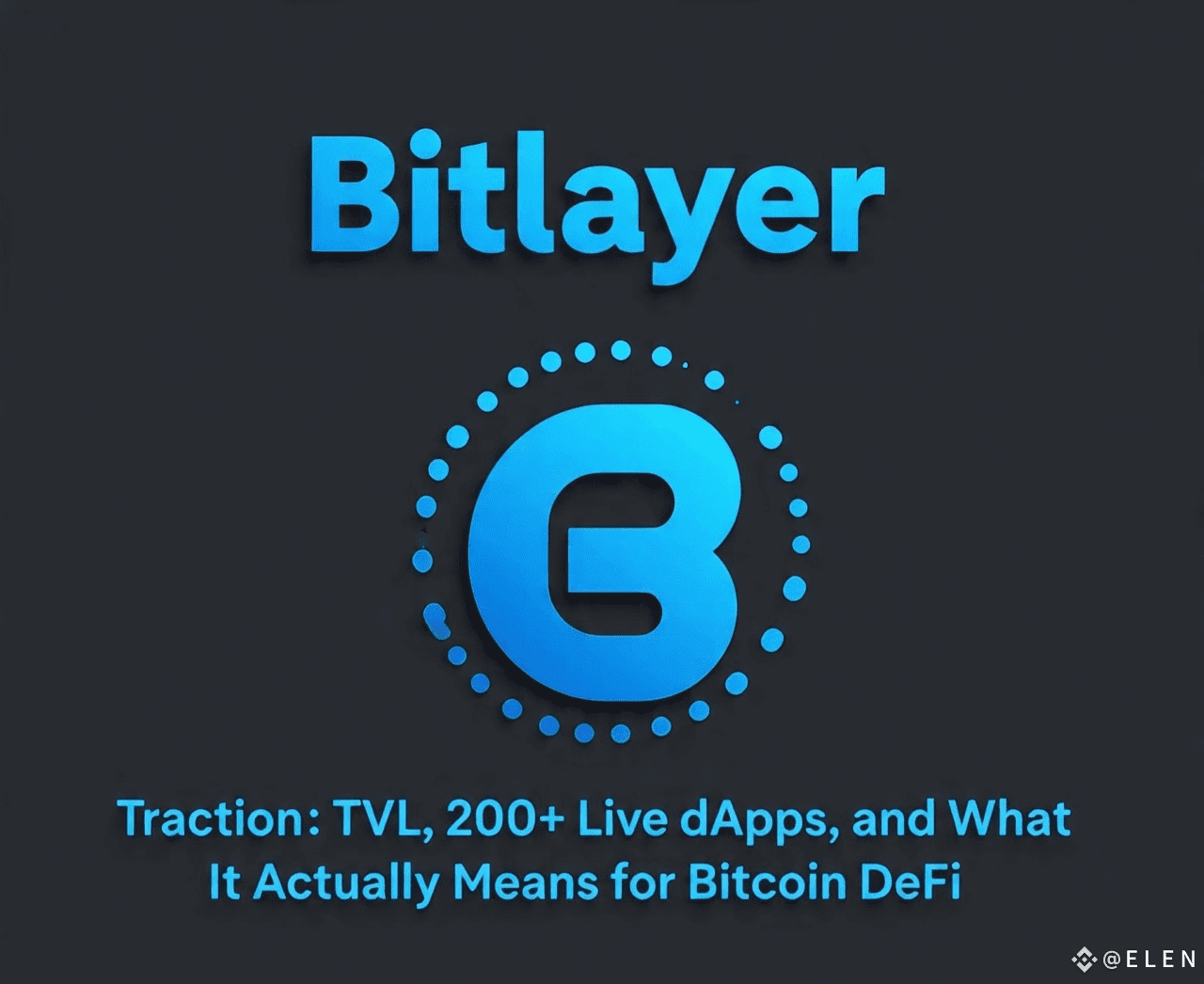
Bitlayer’s recent public metrics aren’t marketing fluff they paint a picture of a rapidly maturing Bitcoin Layer-2 ecosystem. Since V1 mainnet emerged, the network has reported a peak TVL of roughly $850 million and more than 200 dApps deployed on its L2, alongside tens of millions of processed transactions. Those are concrete signals that builders, liquidity, and real usage are converging on a BTC-native platform.
Below I unpack what those numbers mean, why they matter, and the open questions that will determine whether Bitlayer becomes foundational for BTC-DeFi or just another ambitious experiment.
What the headline metrics tell us
1) TVL ≈ $850M — liquidity is real (and measurable).
Total Value Locked is an imperfect metric, but it’s still a practical proxy for capital committed to on-chain protocols. A peak TVL in the high hundreds of millions indicates institutional and retail capital are willing to put BTC and other assets to work inside Bitlayer’s ecosystem — not merely testnets or faucet tokens. That level of TVL moves the project out of “proof-of-concept” status and into “operational” infrastructure.
2) 200+ live dApps — breadth of ecosystem mattering more than a single killer app.
A healthy blockchain early on often depends on network effects: diverse use cases attract different users and liquidity sources. Bitlayer’s catalog reportedly spans DEXs, lending, staking/restaking, infra, oracles, NFT and social projects — a signal that teams are building for multiple demand vectors rather than a single narrative. That diversity helps stabilize activity across market cycles.
3) Transaction throughput and real usage — not just developer vanity metrics.
Public updates and AMAs point to tens of millions of transactions processed and meaningful daily activity on DEXs and yield products. When transactions scale beyond developer testing and start reflecting real economic flows (swaps, lending, yield harvesting, onchain settlements), you shift from theory to execution.
4) Native tooling: BitVM Bridge and L2 rollup roadmap.
Bitlayer’s BitVM Bridge mainnet beta (and V2 rollup plans) directly address the core problem for Bitcoin DeFi: a trust-minimized, auditable path to move BTC into composable smart contract environments. That technical work — if audited and secure — is a gating factor for institutional productization (custody, yield products, RWAs).
5) Market and distribution engines (Booster campaigns, airdrops, incentives).
Programs like the Binance Wallet “Booster” campaign and dApp leaderboard incentives accelerate onboarding and surface liquidity to projects on the chain. Incentives alone don’t make a network sustainable, but when paired with real product traction and developer tools, they catalyze growth and discoverability.
Why these signals are important (and not just hype)
1. Liquidity begets liquidity. Large TVL attracts market makers, lending/borrowing desks, and institutional counterparties that need deep order books and TVL to load size without excessive slippage.
2. DApp diversity reduces single-point failure. If one flagship product stalls, others can carry network activity. Payments, DEXes, and yield vaults each attract distinctive user bases and capital behaviors.
3. Bridges + rollups = composability for BTC. Secure bridging and a Bitcoin-anchored rollup unlock use cases previously limited to EVM chains (programmatic lending, tokenized BTC strategies, onchain BTC yield). That’s the real architectural shift.
4. Institutional validation lowers market friction. High-profile backers and direct distribution relationships (e.g., wallet partners) signal better access to custodians, market makers, and compliance channels — all important for institutional adoption.
Important caveats & risks to monitor
TVL sustainability: TVL spikes can be temporary (incentive driven) — watch retention, fees generated, and capital stickiness once incentive programs taper. Compare TVL to protocol revenue and active user metrics.
Bridge security is mission-critical: Trust-minimized bridges are technically complex. Any exploit or flawed assumption could quickly reverse trust and liquidity flows. Look for third-party audits and public bug-bounty results.
Token & economic design: How tokens (rewards, airdrops, vesting schedules) are distributed affects incentives for builders vs. speculators. Transparent tokenomics matter.
Regulatory and macro risk: Large institutional flows and DeFi products invite regulatory scrutiny; changes in rules or enforcement priorities could shift institutional appetite.
What I’d watch next (near-term catalysts)
Mainnet V2 rollup launch & security audits. A successful V2 (Bitcoin rollup) with audit reports and production traffic will be the biggest technical milestone.
Bridge stress tests and audit publications. Public, reproducible security results and hack-resilience exercises will either build or erode confidence.
TVL composition & revenue data. Is TVL mostly protocol collateral, yield vaults, or short-term incentive liquidity? Protocol fees and revenue sustainability matter more than raw TVL.
Ecosystem stickiness: dApp retention and developer growth. Are new dApps maintaining users, or is activity concentrated in a few projects? Developer tooling and SDK adoption will reveal long-term viability.
Bottom line
Bitlayer’s reported metrics — ~$850M peak TVL, 200+ dApps, large transaction volumes, and an active incentive program — are meaningful. They indicate the project has moved from lab experiment into a functioning ecosystem with real users and capital. That doesn’t guarantee long-term dominance, but it does mean Bitlayer is a heavyweight contender in the nascent BTC-DeFi landscape.
If Bitlayer can pair continued product execution (V2 rollup, hardened BitVM Bridge) with security discipline and sustainable token/economic design, it will have solved several of the hardest problems standing between Bitcoin and mainstream DeFi use. Keep a close eye on audits, TVL composition, and developer retention those will tell you whether the traction is durable or just an early-cycle blaze of activity.
